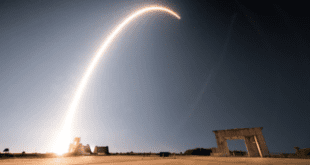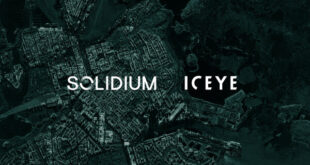
In Spring 2017 Glavkosmos, a leading company representing the interests of the Russian space industry on the international market, announced the creation of an operator of commercial launches called GK Launch Services, which will utilize the Soyuz-2 rocket launched from Russian-based cosmodromes. We talked to Alexander Serkin, CEO of the new company, about the reasons behind the establishing of the company and what goals it pursues on the international launch market.
Alexander, could you tell us about the ideas behind the creation of GK Launch Services? Why was it decided to create a dedicated representative company for Soyuz-2 on the international market?
There were several reasons for that. First, the exclusive rights granted to Russia as a partner in the joint Russian-French company Starsem expired on January 1, 2017. Actually, several launch providers were created back in the late 1990s that utilized specific Russian launch vehicles: ILS in partnership with the US to carry out Proton launches, Eurockot in partnership with EADS (today’s Airbus) for Rokot launches; Sea Launch was a joint partnership of the USA, Norway, Russia and Ukraine for Zenit launches and Starsem was a partnership between the French company CNES and the Russian space agency. It was then that Kosmotras was created jointly by Russia and Ukraine to operate the Dnepr rocket. The founders of Kosmotras were the companies that were developing the RS-20 ballistic missile. By a government order, all these companies received exclusive rights to promote the launch vehicles. All of the abovementioned launch operators were more or less successful on the international launch market. In the period from 2000 to 2010 Russia was the market leader in terms of the number of launches. But the market was undergoing changes, with commercial launch operators entering it for the first time in 2005.
Starsem began its activity as a launch operator at the Baikonur Cosmodrome. Later, the Soyuz launch infrastructure was created in French Guiana. Thus, Starsem’s commercial management became part of Arianespace’s commercial management. And at some point Arianespace became the Soyuz operator. They marketed the Soyuz as a medium-class launch vehicle, placing it between the light Vega and the heavy-duty Ariane 5. As of today, it is still utilized by both Arianespace’s own projects and the European Space Agency’s institutional programmes. However, the growing competition on the international launch market brought about by such new players as SpaceX forced the French rockets to evolve. The Vega was upgraded to become a medium-class launch vehicle. The need to lower the Ariane 5 launch price led to the development of the Ariane 6, and we will soon see the Ariane 6.2 and 6.4 versions. The 6.2 version is also competitive in the medium-class segment. Thus, long-term perspectives for the Soyuz don’t look very good for Arianespace.
There still remains the issue of the French Guiana launch site utilization. The Kourou cosmodrome has a very good potential for geotransfer orbit launches with the Soyuz. In this capacity, it occupies a niche on today’s launch market.
That is how we have faced the challenge of selling Soyuz launches from Russian-based cosmodromes internationally. Therefore, a decision was made by Roscosmos to create a dedicated subsidiary to act as an exclusive Soyuz launch operator. Glavkosmos, a fully affiliated Roscosmos company, boasts a huge experience of launching co-manifested payloads with government missions and participating in international projects.
It was necessary to evaluate if it made sense for Glavkosmos to carry on with this particular activity as we have several other major areas of cooperation and it was decided not to mix them all up. Glavkosmos supported the proposal of Roscosmos to hand this particular activity over to a dedicated subsidiary. Simultaneously the option of attracting private enterprises as a way of making the company more flexible and client-oriented, which is intrinsic to the private sector was under consideration.
In the meantime, Kosmotras launched the Dnepr for the last time from the Yasny launch base in 2015 for a South Korean customer. Further launches by this operator were suspended because of strained relations between Russia and Ukraine. We like to say that the launches were temporarily grounded, which they still are. The Kosmotras management was faced with the question of what to do next and with the challenge of finding new areas to make use of the company’s vast experience gained from 22 launches. It seemed obvious that we had to do our best in order not to go out of business and keep our staff. So, in late 2016 we began to consider the creation of a single launch provider in order to be able to promote our rockets internationally, especially the Soyuz and also the Dnepr, in case we succeeded in bringing it back to the market. This decision was made in early 2017, and in spring of that year the subsidiary was finally created. We are tasked with commercializing Soyuz-2 launches from Russian-based cosmodromes on the international market.
Although it’s understandably a new business, you have probably worked out some strategy already. What would be the goals for GK Launch Services in the next decade?
Our priority is strengthening our leading positions on the low-Earth orbit market, but predominantly in the Sun-synchronous orbit niche. Launching the Soyuz from the Russian-based cosmodromes to geotransfer orbits is unprofitable due to the absence of geostationary satellite designs with the mass below 1 ton. Therefore, our main niche is low-Earth orbit, where our priority is to become the market leader within the next few years with such launch vehicles as the Soyuz 2.1a and 2.1b. In addition to that, we are competitive in the Earth-departure trajectory segment with the Soyuz and the Fregat upper stage as well as medium Earth orbits, but the volume of these segments is smaller than the LEO niche. We are also active on the small satellite market, including micro- and nano-satellites or satellites with a mass below 50 kg. This is our main priority for the Soyuz 2.
It is also crucial that we process feedback from the market and hand it over to the industry as we need to work out what upgrades the Soyuz 2 rocket family needs to undergo in order to meet the requirements and trends of the market in the next 5-10 years.
Our first launches have been scheduled for late 2019 or 2020. We are currently catching up with the market because the implementation of any launch project takes a minimum of 12 to 18 months. In other words, we’ve got to be at the cosmodrome getting ready for the launch two years from now. With this in mind, we’ve been very active in 2018 so far in terms of sales, participating in various tenders and looking for clients, which is a very exciting thing to be doing.
The Electron ultra-light rocket has had a successful first launch recently. In what ways do you think the market will change with the advent of a brand new class of rockets?
I have no doubt that the ultra-light launch vehicle niche will gain a foothold on the international market and will be in demand by the satellite industry, including both by satellite and data customers. Today, there are around 20 to 30 ultra-light rocket designs worldwide at various stages of completion, including successful examples such as the one developed by Rocket Lab.
I remember the universal skepticism in the early 2000s that there would be a market for payloads below 50 kg. Many believed that this format was better to cut out for student test projects and that we would never see it have an impact on the commercial market. However, today we see many new companies entering this segment. Most importantly, they are being heavily invested in, and investors, especially those with a reputation, are pretty hard to fool. As a result, everyone accepts this segment as reality today.
I’d like to see the market’s and the industry’s reaction to the emergence of ultra-light rockets in about five years’ time. Will the segment stay within the limits that are forecast today or will it keep growing as it had by 2017 following active implementation of co-manifest cluster missions of several launch providers in 2010. One of those providers was Kosmotras, as well as India’s Antrix Corporation and the Indian Space Research Organization (ISRO). That activity led to a rapid growth of the micro-satellite market. I wonder if the volume of the ultra-light rocket market will increase in volume too.
On the other hand, I’m not sure the emergence of ultra-light rockets will alter the industry’s economy in any significant way within the next 5 years. The Electron’s launch price tag of U.S.$30,000 per 1 kg is equal to the average launch price on the traditional launch vehicle market. Therefore, the cost of a launch is about 50% or more of the production costs of the micro- or nano-satellite itself. In my opinion, the whole industry tried to solve the profitability problem. I wonder if they’ll have any success within the next 5-10 years.
The wait time before launch must be a more important factor.
Indeed, the ultra-light rocket class is more market-oriented in this respect. There’s more flexibility there as well as the psychological factor. The designer of an ultra-light spacecraft tends to think as a startup entrepreneur when negotiating with another startup that had developed the rocket for them. This will likely add value to such companies. By contrast, we as an industry are oriented at traditional launch technology, which is bigger and technologically more complex. We will be looking for other ways to get the competitive edge as the micro- and nano-satellite market is very attractive to us.
So the battle hasn’t been lost yet?
We will certainly be competing with them, but in a friendly manner.
Can you tell us about your plans for utilizing the Soyuz-5?
The Soyuz-5 is being developed by Roscosmos. This is a state-run project. The preliminary design has been recently approved. We are currently analyzing its market potential in cooperation with Roscosmos, but it is still too early to plan any GK operations of this rocket.
I’m sure everyone in Russia can’t wait to see the arrival of this really very exciting rocket. The project is being actively developed, with a large number of enterprises involved. One could go on talking about the Soyuz-5 for much longer.
Can you highlight the current situation with the Yasny launch base in the Orenburg region?
Our infrastructure there is currently mothballed. We have there two sets of hardware for two potential missions. One of them will definitely never be utilized, but all of that is being kept under guard in good condition. However, there is no use for it at the moment. We will make the decision this year as to the future of this infrastructure, for which we have several ideas.
SpaceWatch Russia & CIS thanks Alexander Serkin of GK Launch Services for this interview.
 SpaceWatch.Global An independent perspective on space
SpaceWatch.Global An independent perspective on space




